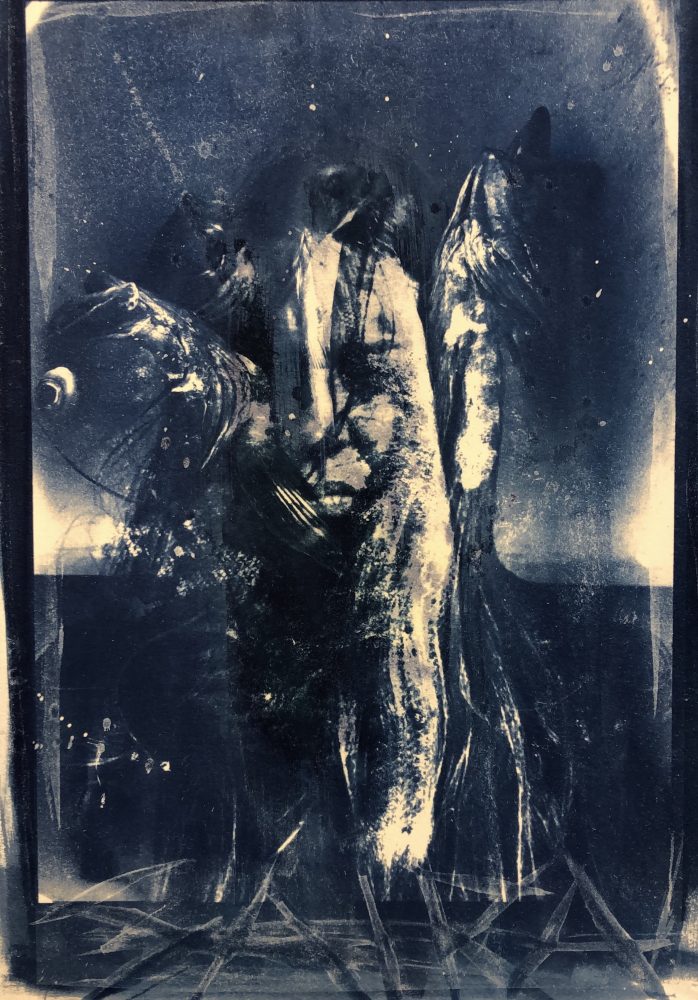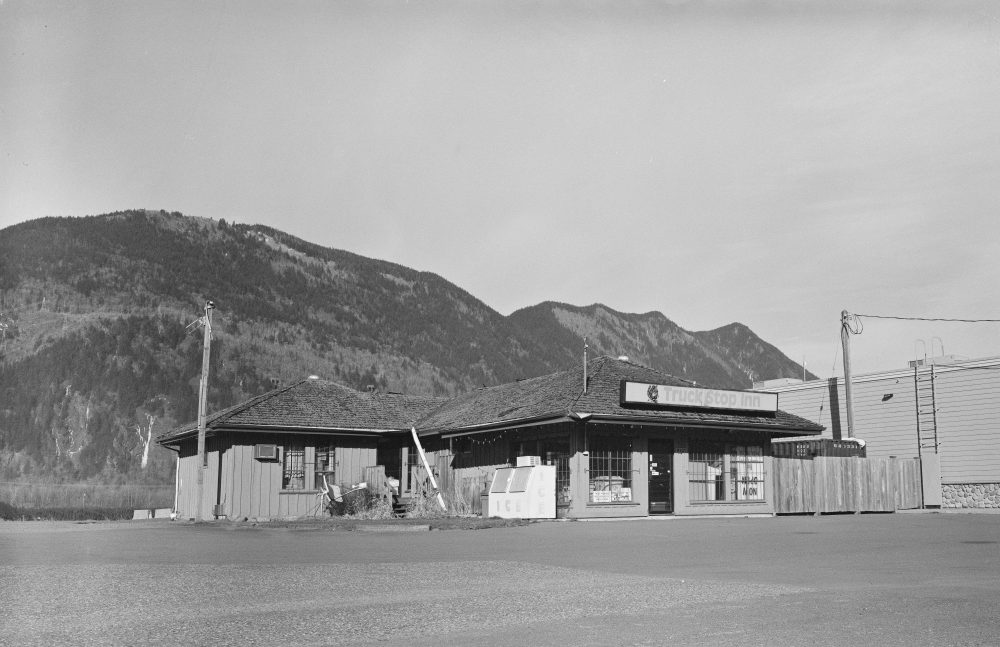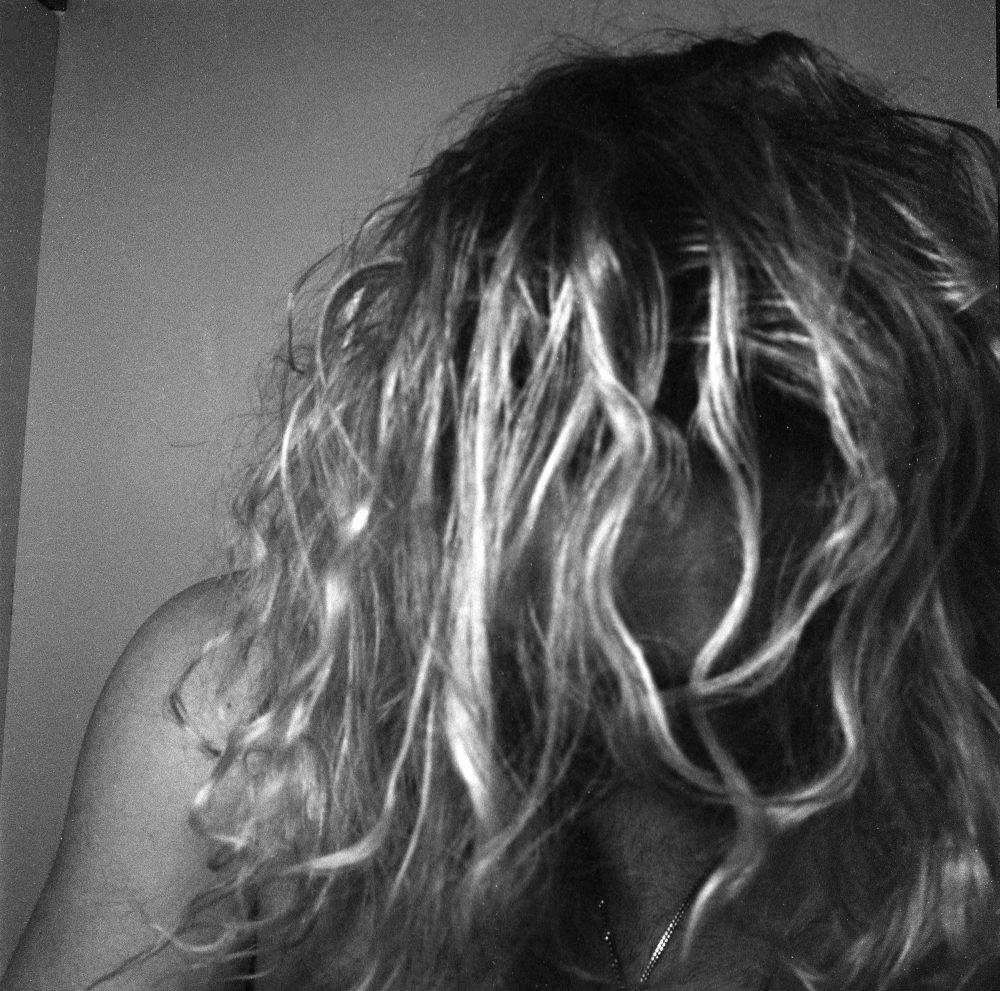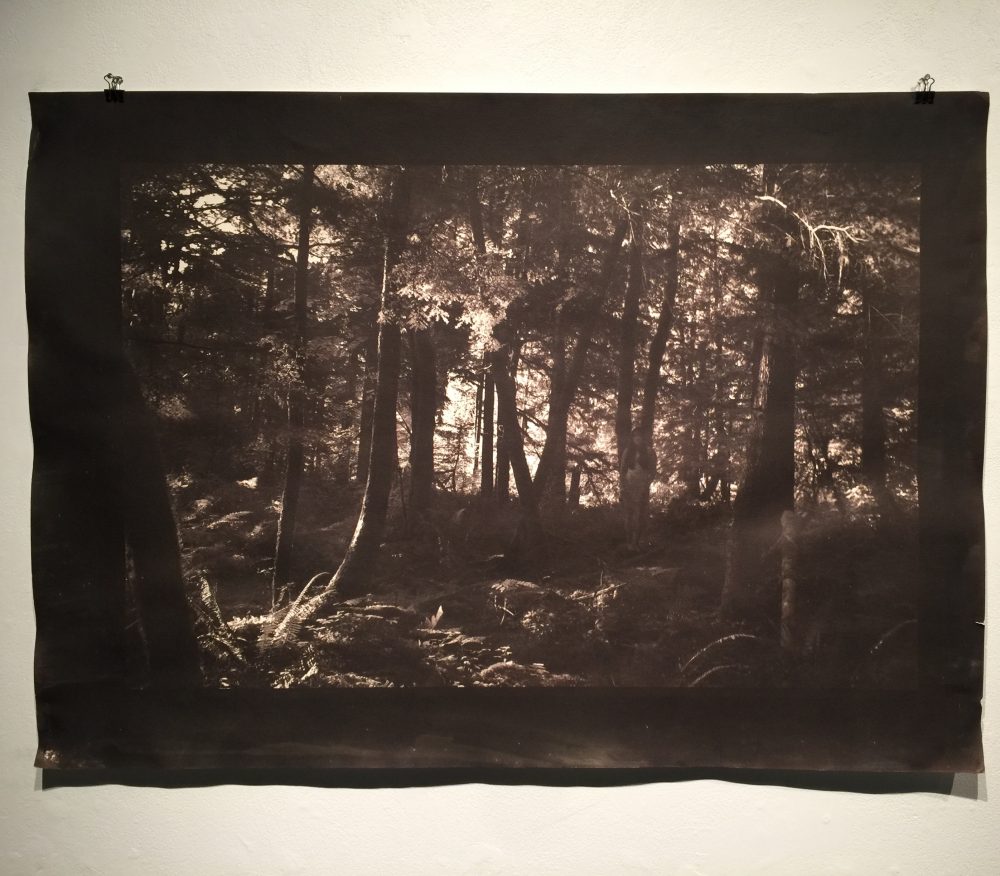Despite the burgeoning digital scene, a love of film photography remains among a select few. The University of the Fraser Valley is home to some of these individuals — individuals who value the slow, sometimes arduous process involved when one chooses film over digital.
The current show at UFV’s very own S’eliyemetaxwtexw Gallery, located in Building B, “All Things in Sight,” features a culmination of the very best work produced by VA 384 (Photography IV) students over the past two semesters. The gallery displays a wide range of photography styles, both film and digital, and pieces are all printed in their own unique way.
 “What I really like about this exhibition is that it shows the vast variety of what photography can be today and what UFV students have to offer in the field of photography,” said Luke Pardy, a second-year visual arts major with pieces in the show.
“What I really like about this exhibition is that it shows the vast variety of what photography can be today and what UFV students have to offer in the field of photography,” said Luke Pardy, a second-year visual arts major with pieces in the show.
When you were a kid, your parents likely took pictures of you on film cameras. You might even have stacks of photo albums documenting your childhood because of the necessity to print every single photo taken on one of these cameras. Although the first photograph ever taken was in 1824, cameras did not become easily accessible and commercialized until 1925 when Kodak invented one of the first portable cameras, the Kodak Box Brownie, which captured images on 5.6 square inches of film. After that came the Leica, the first camera to use the ever-popular 35mm film roll, the same roll of film your mom or dad loaded into their camera to capture 36 photos of your childhood antics. Today, users of digital cameras far outweigh those who shoot with film. People can now take seemingly endless amounts of photos and be able to see said photos moments after they are shot. So, who even shoots film nowadays?
There are currently four classes at UFV that teach the art of film photography. Grace Tsurumaru has been working at UFV for more than 15 years and teaches the class that is currently featured in the gallery. Students learn how to shoot with different analog cameras and print their photos in the darkroom. These are skills that are still useful in today’s world as the demand for film photography is still strong in many industries: fashion, fine art, photojournalism, and even weddings have clients who want their special day shot in film.
Pardy’s two pieces in the exhibition, entitled “Nocturnal Spaces,” are both shot using pinhole cameras. These cameras can be made using anything from a tissue box to a sardine can. Images are recorded on sheets of film inside the box, using an opening as small as a pin-hole which acts as the lens. Pardy constructed his own camera using a leftover Christmas gift box, with the image exposed onto a 4×5 inch sheet film. Pardy started learning film photography because he saw it as the origin of photography and the basis of the art form; he figured that once he understood how to shoot film, he could evolve his art form from there.
Pardy describes some of the beauty of film photography in being not quite able to know what you’re going to get. In today’s world of instant gratification and satisfaction it takes a lot of time to get comfortable with not holding complete control over what the image will turn out to be because as much as you do everything correctly, there is still some luck involved in the process.
“Once you’ve accepted that … there is something freeing about it. There is a real beauty and joy in learning to enjoy that process of letting go in your art form,” said Pardy.
Sarah Kopan, a sixth-year Bachelor of Arts student in integrated studies, has a highly thought-out piece in the gallery, entitled “Absent.” Although her piece is a digital print, she still has a love of film photography, since the practice helped her evolve as an artist.
“With digital photography, if you get one good photo out of a roll of 1,000 that’s normal. With film photography, if you get one good photo out of a roll of 35, that is excellent. That’s a learning curve for a lot of people. It can be a rude awakening to develop a roll of film and there is only one good photo on it,” said Kopan.

Many Chomseng, a fifth-year Bachelor of Arts student with a double extended minor in visual arts and English, is the creator of the stunning Vandyk tonal print, entitled “Origins.” She only started to work with film photography while attending art classes here at UFV. Chomseng was drawn to the nostalgic, old-school feel of film photography and says she uses the medium as a form of expressing herself and expressing the way she sees the world.
Chomseng prefers digital to a degree because film photography can get expensive. However, the expenses, time, and effort required with film produces some pretty amazing results and gives more satisfaction than digital. With digital exists the possibility of always being able to retouch an image and insert as many layers of Photoshop overtop as you like, whereas with film, your work must be so much more precise and careful because editing is not an easy possibility.
The entire process requires so much patience and attention to detail. Chomseng believes those who want to practice film photography must have a level of self-motivation and discipline, since the art form takes so much effort.
“If you’re lazy, this will be really difficult for you, because you have to just push yourself, get out there, do a lot of testing, and be very patient,” said Chomseng.
Although each photo requires so much time, effort, and expenses to get right, capturing a breath-taking image out of this process is worth all of that sacrifice.
“Film photography is more rewarding because you put so much work into having to develop the film itself. You need to take a lot of time and be patient with it,” said Chomseng.
Isabella Dagnino is a third-year Bachelor of Arts student majoring in fine arts. Her two pieces in the show, entitled “Somewhere on the way,” are silver gelatin prints, which means the photo has been printed from a negative onto fiber paper, then put through a series of chemical baths to create a final print.
 Dagnino prefers film to digital because you must always be conscious of what you’re taking a picture of.
Dagnino prefers film to digital because you must always be conscious of what you’re taking a picture of.
“I take a film camera along everywhere I go. It’s just a habit that I got into at a young age to always have a camera with me. The photographer Nan Goldin was really influential on me when I was in high school because she really wanted to document her life and that is what I kind of went with,” said Dagnino.
As Dagnino has been an avid film photographer for many years, she has binders full of negatives, all meticulously organized.
“For me, having a physical piece of proof of something you did in life is better than digital,” said Dagnino.
Zaira Ramirez, a third-year student at UFV, has cyanotype prints entitled “Immigrant Status: Venezuelans Surviving Out of Water” and “Venezuelan My Skin,” which are unlike any of the other pieces in the gallery. Ramirez explained the process to create them involved applying blue emulsion onto paper, then exposing it in the sun or in a lighting box and rinsing it with water. She states that it isn’t a complicated process, although you do need to be highly involved with applying the emulsion and very cautious of the time the piece spends in the light.
Ramirez’s intriguing piece has roots in Aruba, an island close to her home country of Venezuela.
“I saw a fisherman taking fish from a boat and I realized that when we are immigrants, we are like fish out of water. To be an immigrant is hard when you don’t want to be an immigrant; when you leave your country and you are leaving not because you want to, but because the situation is pushing you out of your environment,” said Ramirez.
Ramirez’s work tells the story of her immigration and the struggles she has felt since leaving her home country. She says that this type of art form is a way to help her express feelings of anger over her difficult situation. The process of film photography is a sort of therapeutic exercise and a way to process all that has happened to her. She expressed her love for film photography; what draws her to this medium is the process of being so physically involved in creating the image from beginning to end — it is almost like giving birth to a piece of artwork.
Ramirez gushed over the exquisite details and rich tones that film prints produce, and remarked on the superior quality and characteristics that film prints have over digital. Many professional photographers still shoot in film today because of the aesthetic that comes with a film print that digital simply doesn’t live up to. Clients are still demanding this higher quality image; there are some projects that are still better undertaken by a film photographer. Yes, digital photography is more convenient and economical than shooting with film, but the reasons to try the latter are endless.
So why would anyone choose film over digital? Some find the practice of developing film to be therapeutic, in discovering happy accidents once the photos develop, and the ability to hold tangible memories of moments lived in your hand. For others, shooting with film means slowing down, because only 35 exposures in a roll of film requires you to carefully think and plan out every shot. Another photographer may love the different aesthetic, and higher quality print that only film can provide. Someone trying to process a difficult situation may use film photography as an outlet to express feelings of anger and nostalgia. Some may find magic in watching their print slowly develop in a tub of chemicals right before their eyes. These are just some of the benefits of film photography that I learnt from these five art students who chose to engage in this lost art form.
Check out the exhibition “All Things in Sight” in the S’eliyemetaxwtexw Gallery to see exactly why film photography is so cool.

Andrea Sadowski is working towards her BA in Global Development Studies, with a minor in anthropology and Mennonite studies. When she's not sitting in front of her computer, Andrea enjoys climbing mountains, sleeping outside, cooking delicious plant-based food, talking to animals, and dismantling the patriarchy.

